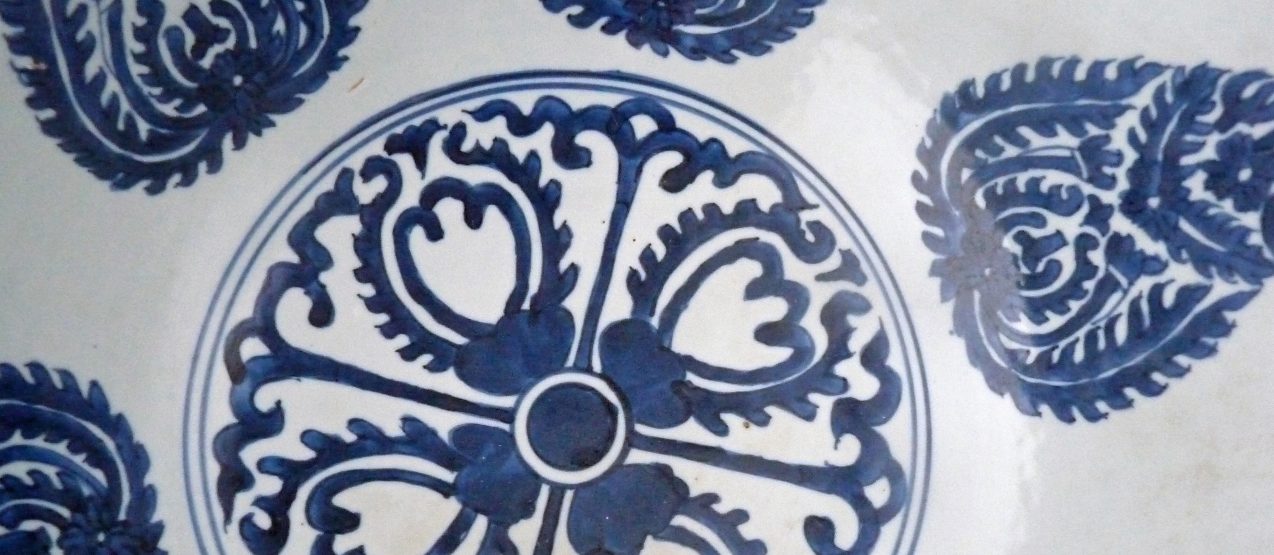The buying trends of collectors for Chinese ceramics have noticeably changed over the last fifteen years. Where condition and age were historically the prime considerations in buying a piece, the rapid rise in prices due to the opening of the Far Eastern market has curtailed the ability of some to buy certain pieces and has therefore brought back into favour pieces with some form of damage. Always purchase the best you can, but if that is a damaged piece then do not undervalue it: that damage is allowing you to purchase something rare and lovely.
With quality being an important underlying factor when buying Chinese ceramics it is important to understand how specific terms can describe the specific condition of a piece. Some helpful terms used to describe Chinese ceramics include:
- Hair cracks: very fine cracks to the glaze of a piece
- Frits: glaze breaking away along the edge of a piece
- Glaze flakes: small areas of glaze missing elsewhere on the piece
- Nibbles: slight deterioration of the body around the edge of a piece
Today, small chips do not have the effect on price they once did. Cracks and chips can be unsightly – although hair cracks can be difficult to find let alone see, the larger cracks and chips, although possibly disfiguring, may be the reason that much wanted stem cup has become affordable. Chinese porcelain up to the mid-18th century did and does have a tendency to ‘frit’, as there is fragility to the rims and edges where the glaze is at its thinnest and the rims and edges are at their sharpest. When firing, the glaze has to melt on to the surface and before it has properly set it will have moved down away from the edges. The thinner the glaze the more prone the piece will be to fritting; this applies to Kangxi porcelain, as well as Kraak, which also has a fine body. Remember that Chinese porcelain was produced for around eight hundred years before Europe learnt the secret, and so some damage will happen on the early pieces which were for the age very finely potted, especially Qingbai ware of the Song dynasty (960-1279).
I prefer not to get pieces of Chinese ceramics restored, leaving the aesthetics of the damage up to the collector. Many collectors like the view ‘what you see is what you get’. If a broken piece has been glued back together but not hidden this is more desirable than damage that has been disguised by much over spraying and over painting. A possible exception to this preferred ‘museum quality restoration’ is a small discreet area of repair which aids the overall appearance, for example to a spout or handle of an object. Wherever possible hold the piece to bright light so that the extent of the original damage may become visible. Interestingly, pieces that have been restored using a gold lacquer have always found a good price, the perception being that this expensive form of restoration was only applied to high quality pieces: in most cases, this is true.
If you choose to restore, take a photo of the damage beforehand to avoid ambiguity about how much has been replaced / repaired / hidden. But please leave in any staples that have been used to repair a piece – this form of repair began as early as the Roman period, allowing broken pieces to remain useable. These staples of lead, iron, copper, and silver and, on rare occasions, gold allowed well- loved pieces to continue being loved.
It should also be noted that Chinese porcelain is mainly ‘hard paste porcelain’, and as such does not absorb moisture through cracks or chips, in comparison to early English porcelain which is ‘soft paste porcelain’, and does. Therefore a chip, crack or frit on Chinese ceramics will remain clean, even when it possibly appeared just after production. This clean appearance is easy to maintain just by washing the piece – it may seem surprising, but this does not need to be done by professionals: a good soak in Vanish works wonders!
Lastly, firing flaws are defects and damage that occurred while in the process of being made, for example where a piece was knocked before firing but still glazed and fired. These are flaws but not damage and should not affect the price – although I do tend to make allowances if it is aesthetically displeasing.


